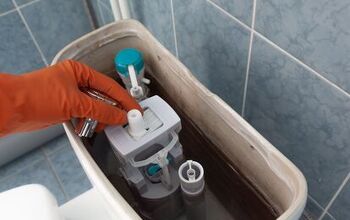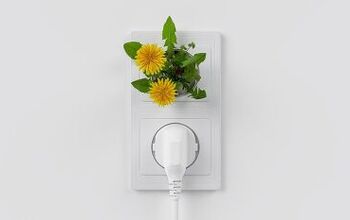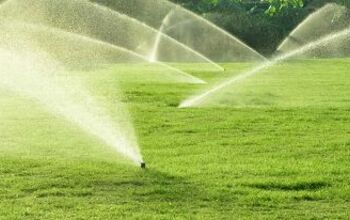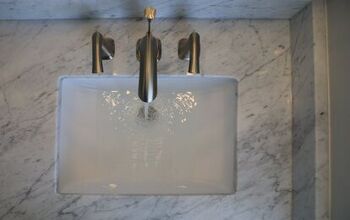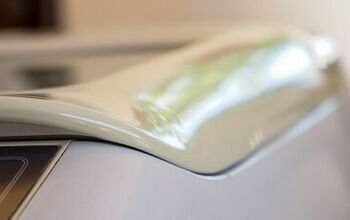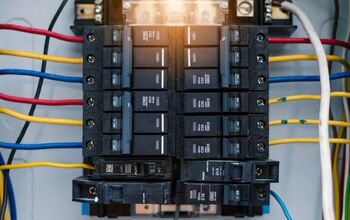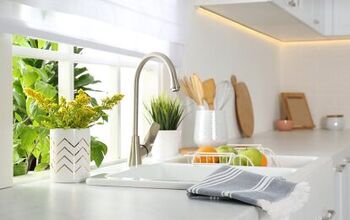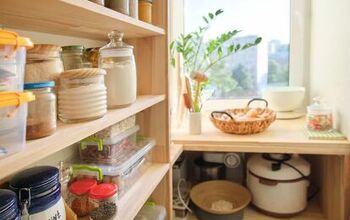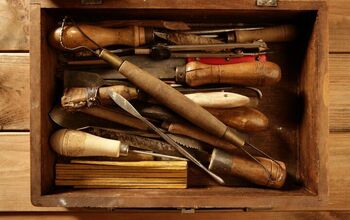Do Houseplants Cause Mold?

Maintaining houseplants is a fun hobby, but it takes a lot of work. However, finding mold in your house can ruin the fun and make you rethink your hobby. So, do house plants cause mold?
Houseplants do cause mold if you have little air circulation and regularly overwater the soil. You will also likely find mold if the air near your houseplants is above 50%, and mold is almost inevitable if the level reaches 70%. Carefully water your plants to avoid soaking them, and pick soil that drains well to prevent mold.
The last thing you want to do is accidentally spread mold throughout your house just because some of your plants get moldy. Follow along as we explore everything you must know about the relationship between houseplants and mold.
Can Indoor Plants Cause Mold On Walls?
You may find mold on your walls if you have indoor plants. Houseplants are often consistently damp, which is a perfect recipe for mold in many settings. That’s especially true if your home has warm, stagnant air and a consistent temperature.
The slower your houseplants drain water, the more likely you are to find mold at home. That’s because slow-draining soil retains water for longer than it needs to. This can leave the soil soggy, weakened, and vulnerable to mold.
Mold spores can appear on the soil and the plant’s leaves, then travel throughout your home. The air conditioner can even carry mold spores throughout your house when the fan blows. In that case, you may find mold far from your houseplants, even though that is where the mold originated.
How To Prevent Mold If You Have Houseplants
Mindfulness is the key to preventing mold if you have houseplants. You’re more likely to find mold in your house if you treat your houseplants like they’re outside, as indoor plants have different needs. However, preventing indoor mold is easy if you follow a few key steps, such as:
1. Pick The Right Soil
Slow-draining soil, like clay soil, retains water for a long time, which is especially risky indoors, as the water is unlikely to evaporate as fast as it would outdoors. You may have lights on your plants, but they don’t evaporate water as quickly as the sun does.
Ideally, you should consider coarse, sandy soil as it drains water at a healthy rate. That said, the ideal type of soil varies based on what type of plants you plan to grow. Choosing the right soil can ensure healthy growth and appropriate drainage.
Perlite mix is especially great for houseplants because of the drainage rate and stability. It’s worth repotting your indoor plants with new soil if you often find them soggy and musty.
2. Wash New Plants
Every houseplant enthusiast looks forward to buying new plants from local nurseries. However, you must be careful, as some of the plants at nurseries have mold spores and pests, such as spider mites. In some cases, you can even inadvertently buy soil that is tainted with mold spores.
Unfortunately, you can’t typically inspect soil for mold spores, so you must thoroughly inspect the plant’s leaves and stems for specks of mold. You can scrape mold off the plants and soils, but some spores may remain.
It helps to dilute 1-2 tablespoons of apple cider vinegar with ¼ gallon of water and spray your moldy houseplants. The apple cider vinegar should be strong enough to kill the mold spores and stop them from spreading. However, you must avoid using more than 2 tablespoons, or else you may harm the plant itself.
3. Water Them Carefully
Choosing the right soil for your houseplants is important, but overwatering the ideal soil can still cause mold. No matter how well your soil drains, there is a good chance that it will remain damp for way too long if you overwater it. The longer the soil stays damp, the more likely you are to find mold in your house.
That’s why you must research how much water each of your houseplants needs. Group them accordingly, so your drought-tolerant plants are near each other, and you know not to overwater them. This will help you conserve water and organize your plants with a visual reminder. The top 2” of soil should typically be damp, but not soaking wet.
You must also consider that plants sometimes have different watering needs when you bring them indoors. That’s because in most cases, your house isn’t nearly as hot as your backyard during spring and summer. Your plants’ roots may not go through water as quickly due to the different conditions indoors.
4. Use A Dehumidifier
Evapotranspiration is part of having houseplants, as water will work its way up through the plants and evaporate. The more plants you have, the more evapotranspiration will take place, which can be problematic. That’s especially true if you live in a humid climate and your house is already humid without indoor plants.
Every houseplant enthusiast should invest in a hygrometer, which is a humidity monitor. Check your hygrometer to make sure the indoor humidity level consistently stays between 30% and 50%. You must buy a dehumidifier if you find that your indoor humidity level stays at 70% or above.
Not only can that cause mold, but it can also cause respiratory problems, especially if you have asthma. Excessive moisture in the air can also damage your furniture, flooring, and wallpaper. Put the dehumidifier near your houseplants to treat the problem at the source.
5. Improve Air Circulation
Stagnant air is just as bad as excessive moisture and darkness when it comes to mold. The mixture of moisture and stagnant air gives mold the perfect opportunity to grow. Eventually, the mold will spread when air moves, and there’s no limit to where it will wind up.
You can largely reduce the risk of mold in your house if you improve the ventilation. Run your air conditioner or furnace at least several times throughout the day to prevent stagnant air. That can become expensive, however, so some people use floor or ceiling fans instead.
Keep the fans near your plants to prevent mold from forming on them and traveling through the air. The airflow can also strengthen your plants’ stems, like the wind does outdoors. Consistently circulate air throughout your house to prevent mold.
6. Plant English Ivy
While houseplants can contribute to mold, some of them, such as English ivy, can help prevent it. English ivy can reduce mold particles and other contaminants in the air in your home. This is quite useful for people who are sensitive to allergens, so it’s worth adding it to your plant collection.
The key is to ensure the soil never becomes soggy, or else your English ivy won’t grow well. Keep in mind that English ivy is a climbing plant, so you must pick a spot where its vines can ascend. You can even stabilize and train the ivy with an indoor trellis to make it look its best.
Summing It Up
Indoor plants can cause mold on the walls and other surfaces in your home if you aren’t careful enough. You can largely prevent this if you choose soil that drains well and avoid overwatering the plants. Keep the humidity level in your home at 50% or slightly below and improve indoor air circulation to deter mold growth.
Related Guides:

Nick Durante is a professional writer with a primary focus on home improvement. When he is not writing about home improvement or taking on projects around the house, he likes to read and create art. He is always looking towards the newest trends in home improvement.
More by Nick Durante












